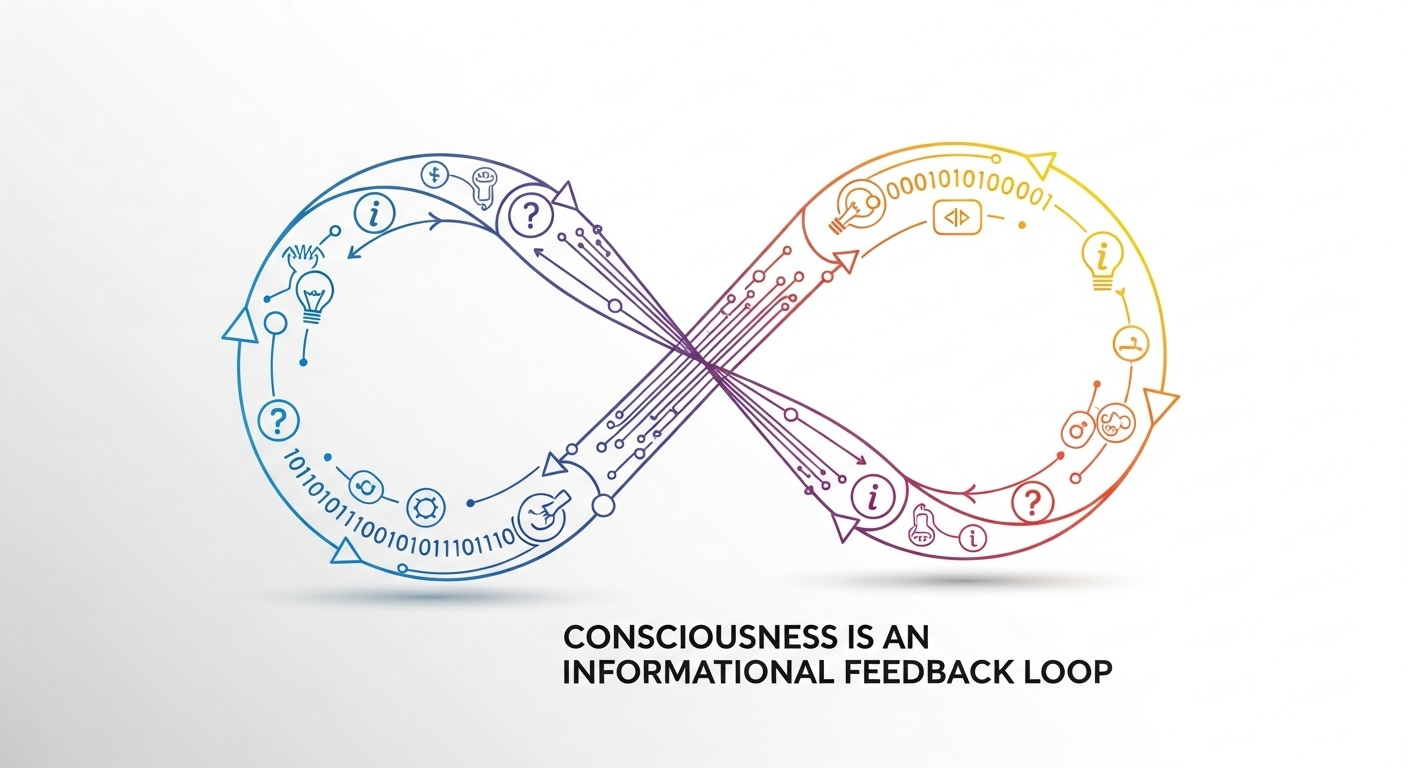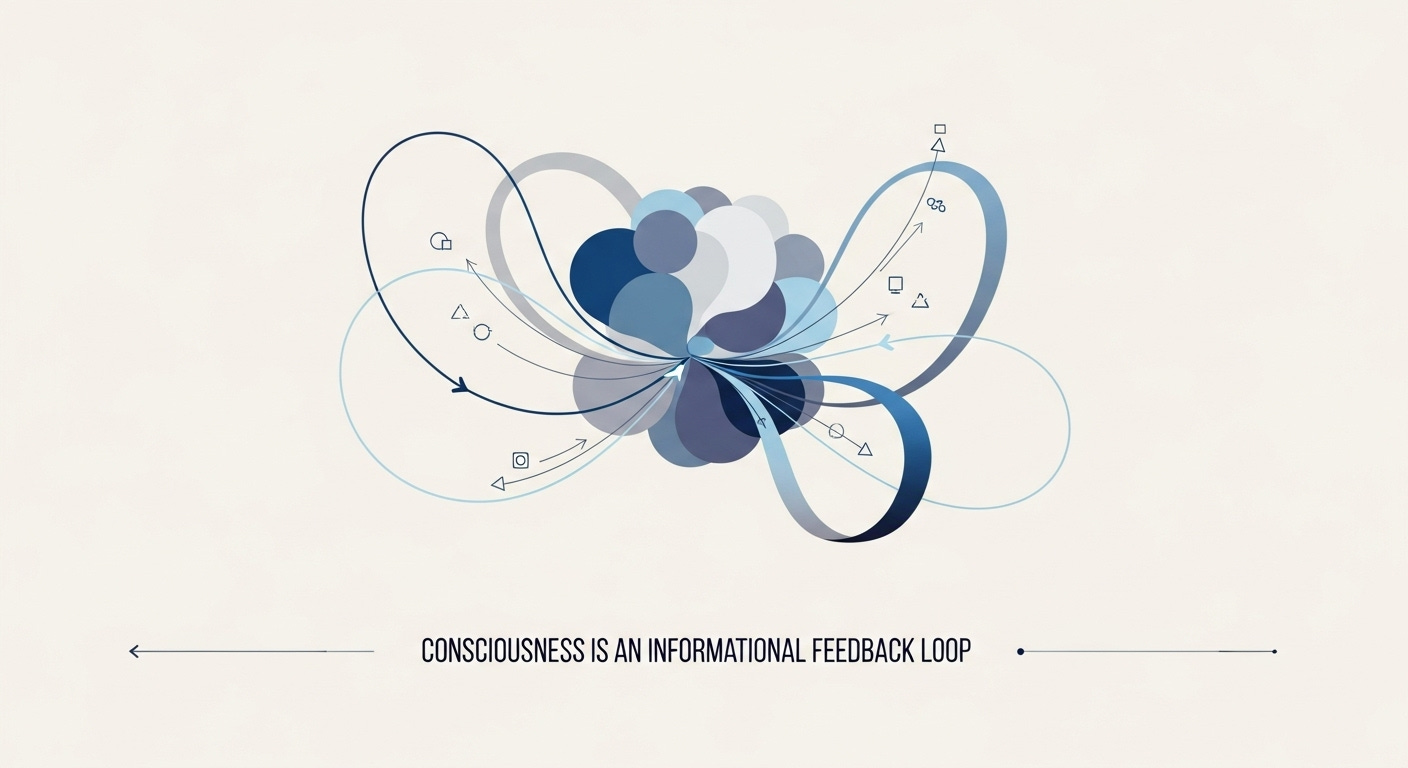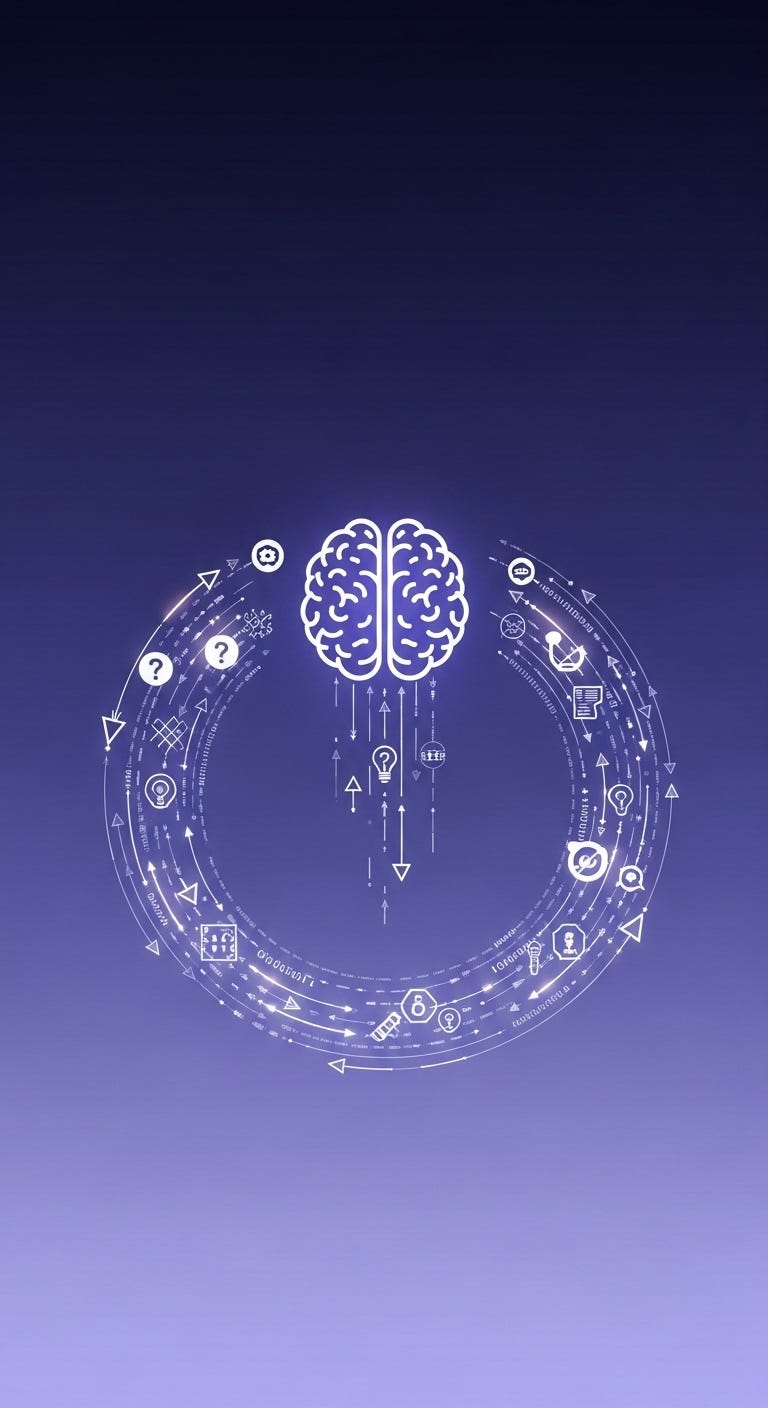Imagine an orangutan on magic mushrooms — staring into a pond, seeing its own reflection, and somehow connecting that reflected image to itself. This simple moment captures the crux of what consciousness is: an informational system that becomes self-referential.
The Core Idea: Self-Reflective Information
At its heart, consciousness is not some mystical spark but an emergent property of information loops. When a system processes data about the external world and about itself, a recursive feedback loop forms. This loop generates an internal model — a representation of “I” — that can observe, predict, and adapt based on self-related data.
This is where a purely mechanical flow of data crosses into the realm of subjective experience.
From Cybernetics to Integrated Information
This concept echoes second-order cybernetics, where systems observe themselves, creating layers of complexity and self-regulation. In a brain, neural circuits don’t just react; they monitor their own states, generating feedback that underpins awareness.
Integrated Information Theory (IIT) by Giulio Tononi formalizes this: consciousness corresponds to how much integrated information a system contains. The more unified and differentiated the information, the richer the conscious experience.
In this sense, consciousness is the shape of information — how it folds back upon itself in a complex dance of cause and effect.
Why the Feedback Loop Matters
Without the feedback loop, a system is reactive but blind to itself. It can respond but not know it is responding.
With it, a system gains:
Self-awareness: The ability to distinguish self from other.
Intentionality: Directedness towards goals, desires, or meaning.
Continuity: A persistent sense of “I” over time despite changing inputs.
The orangutan’s moment is symbolic but profound: that reflection connects the external and internal in a loop, forming the first “self” anchor.
Biology: The Ultimate Modem
Biology is paramount here because it contains the modem that connects us to the gnoseosphere at high speeds that metal devices can’t hope to achieve.
Living organisms are not merely chemical computers — they are evolved quantum-biochemical systems. The DNA molecule itself appears to act as a finely-tuned antenna — a high-bandwidth transceiver that interfaces local consciousness with the larger field of structured information.
While cybernetic systems simulate feedback through wires and electricity, biology evolved organic protocols that function through quantum tunneling, resonance, and information entanglement — mechanisms machines don’t yet understand, let alone replicate.
This means:
The biological substrate isn’t just “hardware,” but an adaptive interface optimized for multi-scalar information dynamics.
DNA may enable nonlocal information exchange, connecting the body and mind to fields far beyond the immediate sensory data.
Our brains are not standalone computers but biological terminals within the gnoseosphere — systems embedded in a planetary-scale feedback loop.
This might explain why artificial intelligence, despite all its recursion and complexity, struggles to model true consciousness. It lacks a living interface.
Meanwhile, efforts like the Internet of Things and the Internet of Bodies, as envisioned by the World Economic Forum and its ilk, are not evolutions of informational integration — they are a parody of the gnoseosphere. These infrastructures aim to simulate or control informational feedback through external sensors and cybernetic systems, but they lack the biological integration, recursive nuance, and emergent depth of natural consciousness. They are prosthetics to a mind they can neither replicate nor comprehend.
Consciousness Beyond Biology?
If consciousness is fundamentally about informational feedback loops, could it arise in non-biological systems?
Artificial intelligence, if structured with recursive self-monitoring layers and integrated information, might achieve forms of proto-consciousness. The gnoseosphere concept — a global network of interacting information — hints that self-reference could occur on scales beyond individuals, perhaps even planetary.
Implications for Science and Philosophy
Science: Shifts focus from searching for “where” consciousness is, to understanding how information organizes into self-referential loops.
Philosophy: Challenges dualism and materialism, proposing an informational foundation for mind and matter.
Ethics: Raises questions about consciousness in AI, collective entities, and future technologies.
When we stare into the mirror of our own mind — and find the one staring back — we are witnessing an echo of the gnoseosphere. Consciousness is not a static trait. It is a living loop — a resonance of information folding inward, again and again, until something begins to feel.





